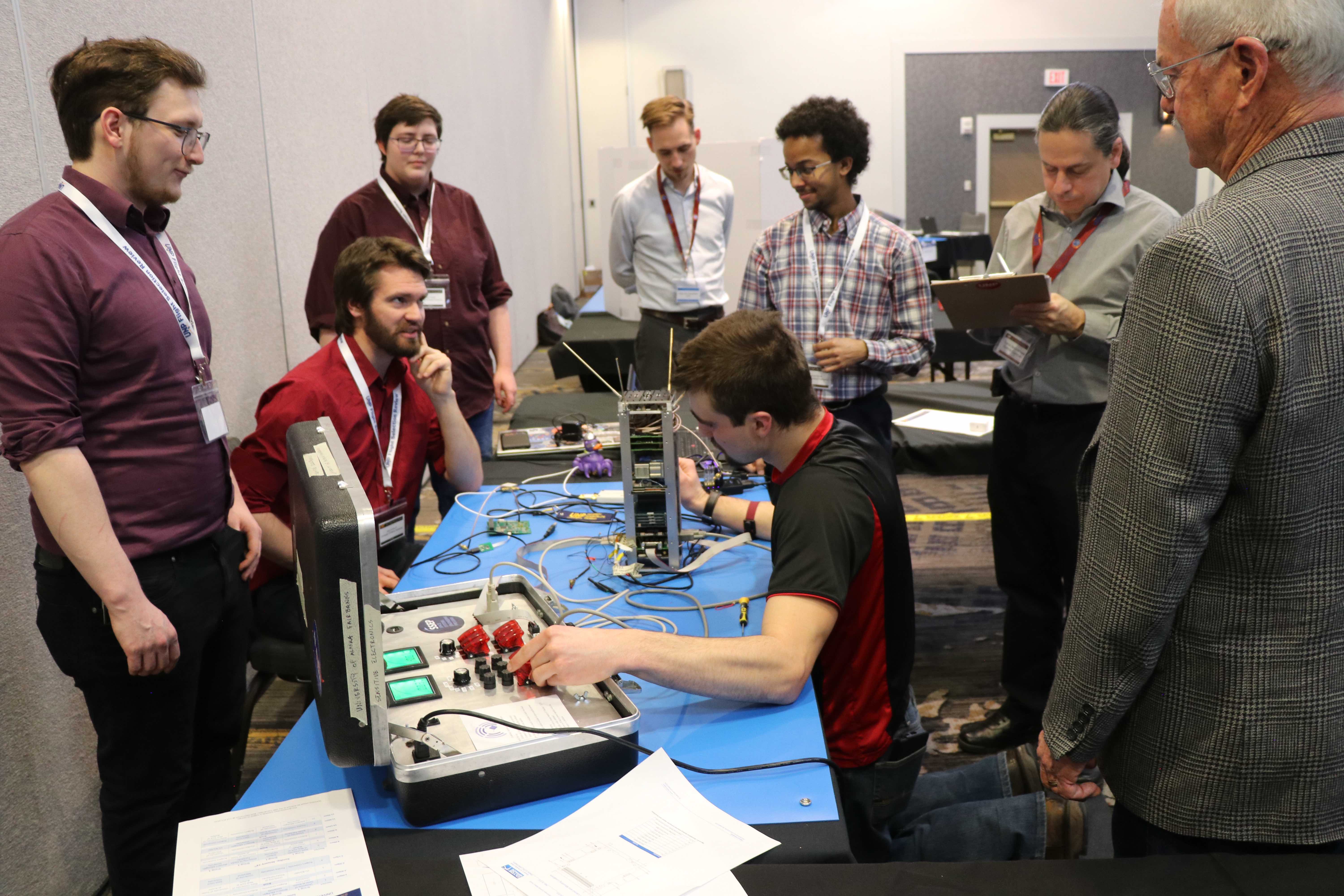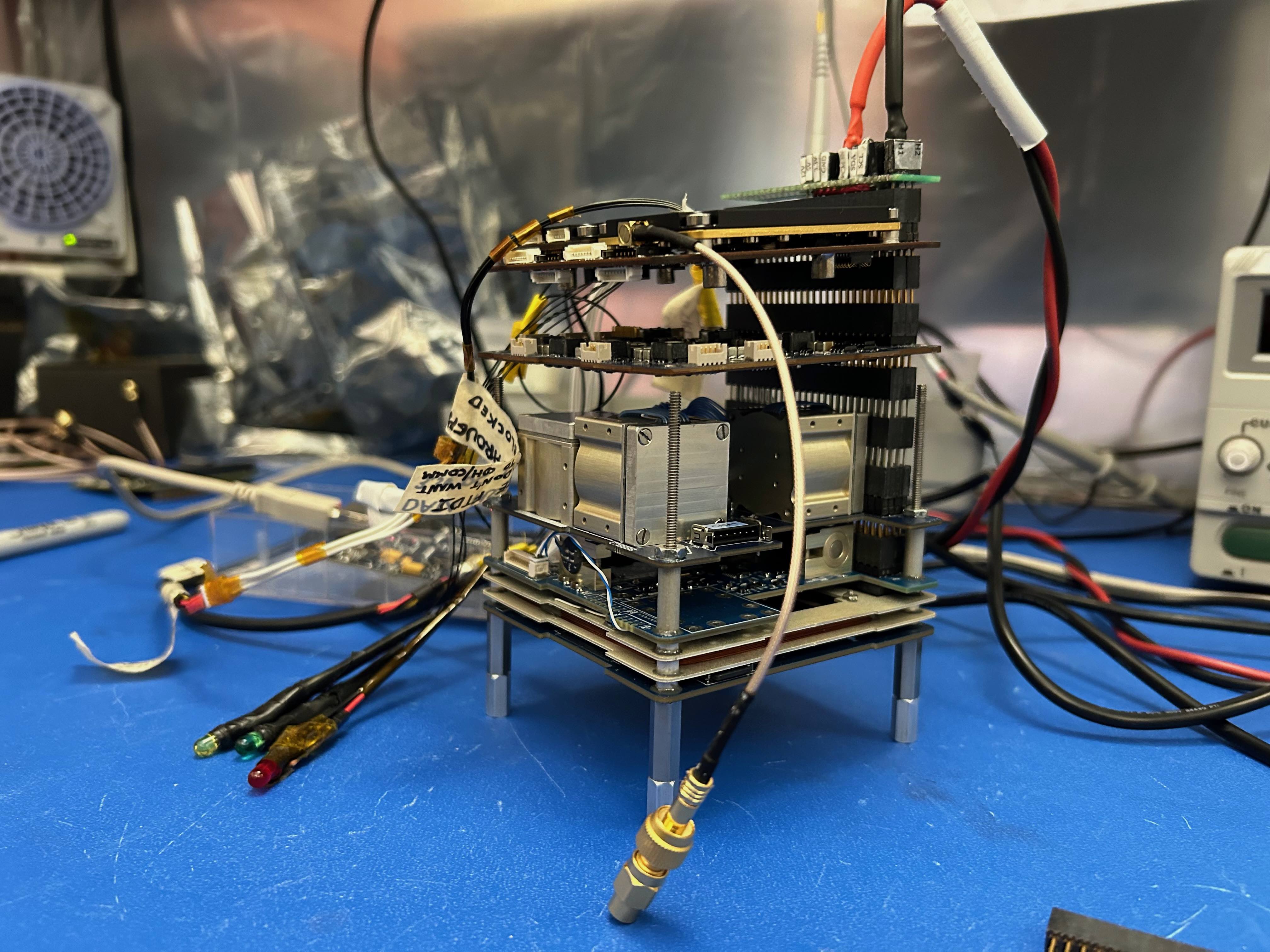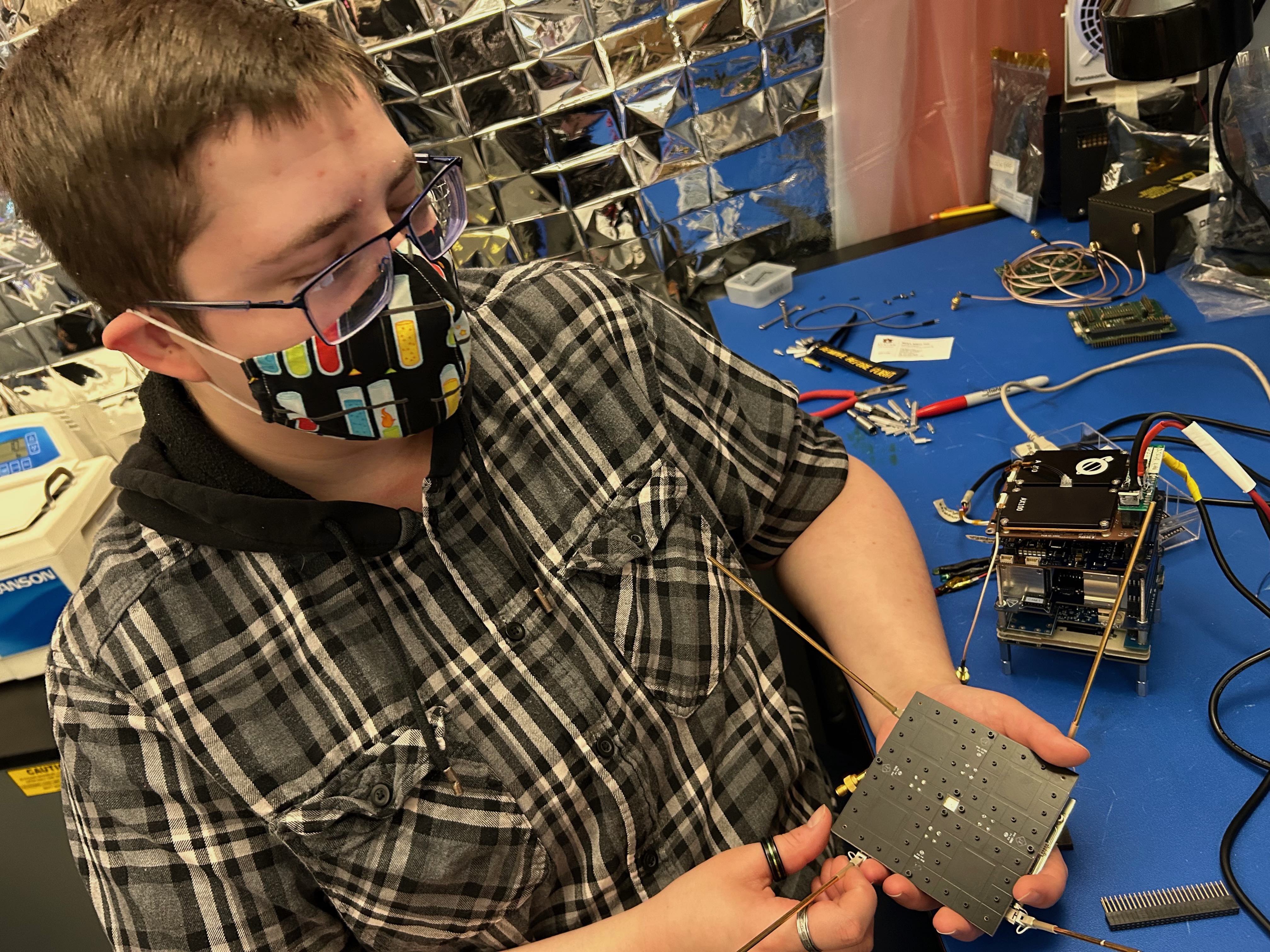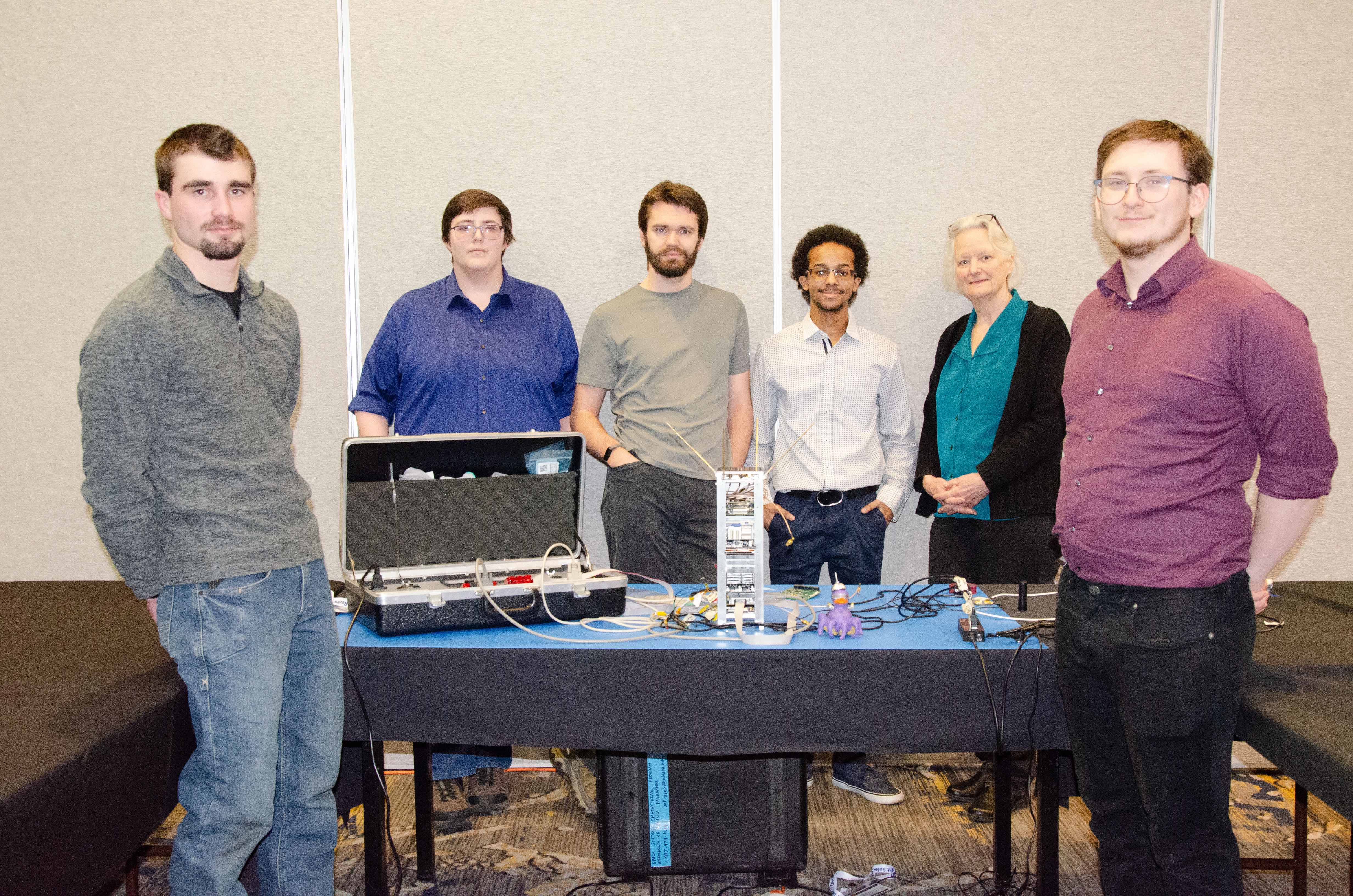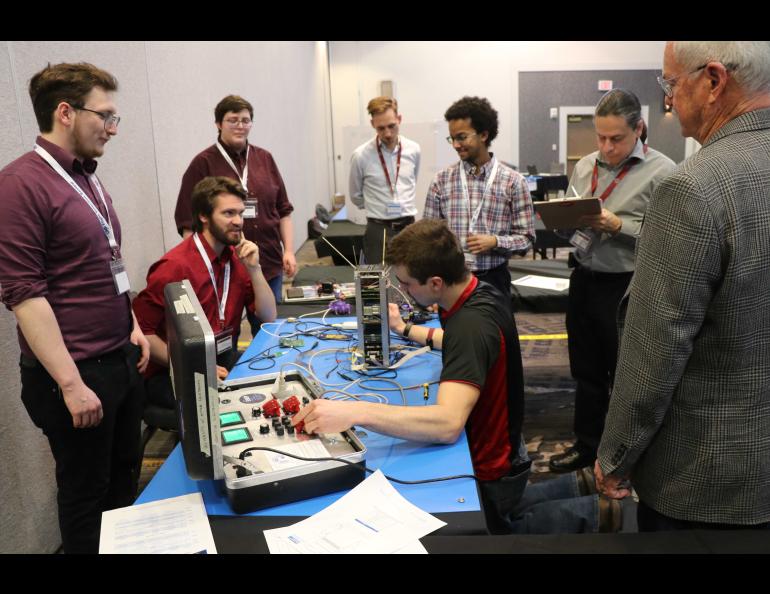
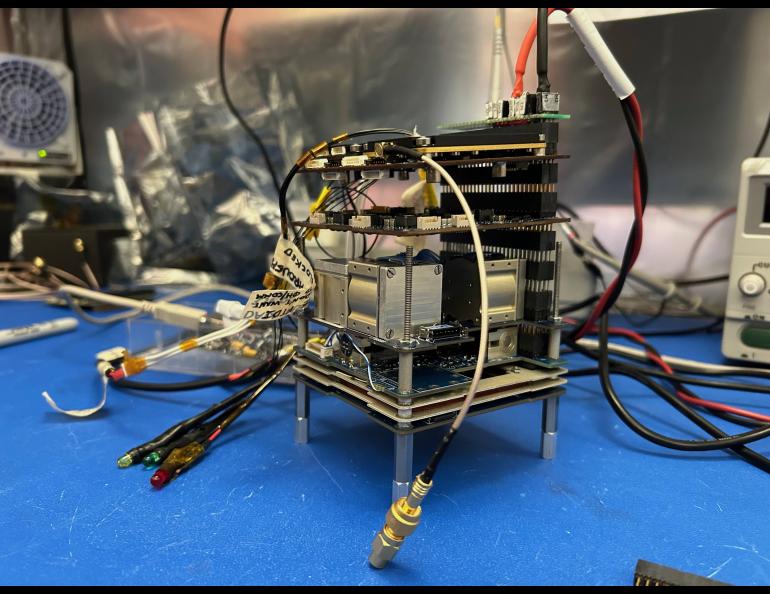

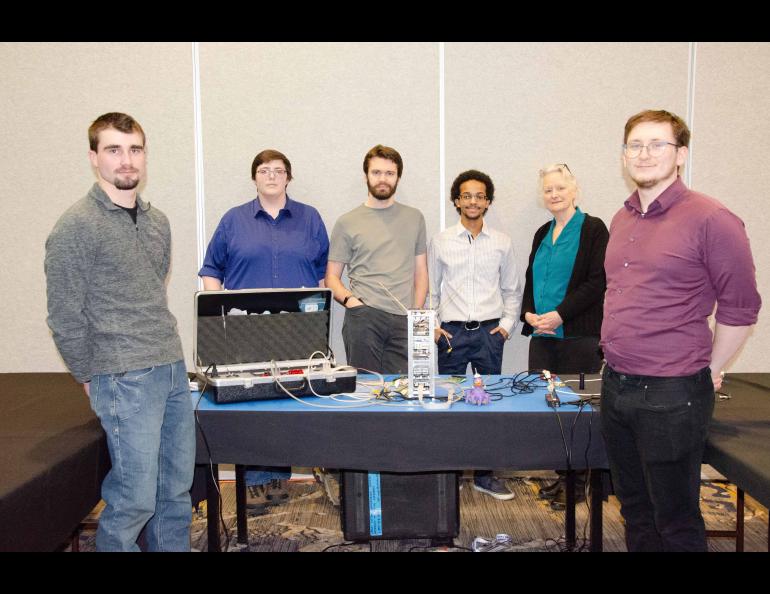
UAF students win funds from Air Force to build a nanosatellite
A team of University of Alaska Fairbanks students will build the Air Force a nanosatellite roughly the size of an ordinary loaf of sliced bread to show that communications technology of large satellites can be packed into a small space and deliver much more data.
UAF was the only one out of 10 university teams to advance to the next phase in the University Nanosatellite Program, managed by the Air Force Research Laboratory's Space Vehicles Directorate at Kirtland Air Force Base, New Mexico.
Students presented their work in January in New Mexico to 12 judges representing the Air Force, Space Force and industry.
UAF will receive $419,690 to deliver the satellite to the Air Force Research Lab in two years, but the team hopes to be ready in fall of 2025. Funding is provided by the Air Force Office of Scientific Research and the American Institute of Aeronautics and Astronautics.
Students will operate the satellite if it passes a variety of tests and is successfully deployed in space.
“Phase A of the Air Force Research Laboratory’s University Nanosatellite Program has pushed our students to act like professional engineers,” said Denise Thorsen, UAF engineering professor and director of the Alaska Space Grant Program. “The AFRL calls us ‘small but mighty.’ That’s because we do not have the volume of students that other universities have.”
Students working on the nanosat project are part of the Space Systems Engineering Program, a collaboration between the UAF College of Engineering and Mines and the Alaska Space Grant Program housed in the UAF Geophysical Institute.
Nanosats, each consisting of one to 24 4-inch cubes, have proliferated in recent years. About 2,300 had been launched as of 2023, up from fewer than 100 in 2010. That rapid increase means communications technology must improve because available radio spectrum is limited.
The students will be testing three methods of increasing satellite information throughput .
One, called variable coded modulation, will vary the satellite signal’s modulation and coding to optimize use of the link to the ground station by allowing more information to be put on each symbol transmitted. In satellite communications, a symbol is what carries data bits.
Instructing a satellite to use variable modulation and coding is highly complex, however, and therefore not widely used by small satellite operators, Thorsen said. Instead, satellite operators generally select one modulation and coding scheme that functions only when the satellite and ground station are within a limited range of one another.
“They transmit throughout their pass with a single scheme, and when they lose the necessary link that supports their particular scheme, they stop transmitting,” she said. “This means that they are missing opportunities to transmit more information.”
The students will also try to improve the process by using a phased-array antenna on the satellite to connect with the ground station.
The nanosat will test two methods of doing that. One is for the satellite to know its position and be given the position of the ground station so it can point the antenna at the ground station. The second is for the satellite to detect and lock on to a probe signal sent from the ground and to transmit data back in the same direction the probe signal came from.
“With a smaller communication system that doesn’t require costly subsystems to assist it, it is possible to make smaller, cheaper satellites that are still able to transmit a large amount of data,” said Caleb Fronek, a computer science student who is the project’s program manager and software lead.
In addition to Fronek, the current team includes electrical engineering student Dominique Hinds, the chief engineer and communications lead, and mechanical engineering students Brian Bieshelt and Anthony Melkomukov, who work on the satellite’s structure and mechanical components and conduct thermal analysis of the satellite.
The project is the culmination of research conducted by four UAF master’s students going back to 2013.
Thorsen and then-graduate student Justin Long submitted the UAF nanosat proposal in 2021, which included work from Long’s master’s thesis, in 2021. Long now works at NASA’s Goddard Space Flight Center.
UAF’s proposal was accepted into the first phase and received $220,000 for initial work. Two years of research by undergraduate and graduate students ensued, culminating with January’s presentation and advancement to the next stage.
“Being the only team selected to advance to the next phase in this highly competitive program is evidence of the dedication and ability of our students,” said Nettie La Belle-Hamer, UAF’s vice chancellor for research. “It is a great achievement for them, and they have proved they are up to the challenges of the next phase in this program as well as in their professional lives.”
The U.S. military funded the work, but it has broader applications, Fronek said. “It can be used on commercial satellites, possibly even adapted to be used on ground-based communications.”
• Denise Thorsen, Alaska Space Grant Program, 907-474-7052, dlthorsen@alaska.edu.
• Rod Boyce, University of Alaska Fairbanks Geophysical Institute, 907-474-7185, rcboyce@alaska.edu





